
Vitamin B7. Biotin Molecular Chemical Formula. Infographics. Vector Illustration On Black
Vitamin A is a general term encompassing various fat-soluble substances such as retinol, retinyl palmitate, and beta-carotene. Its various metabolites are essential for vision, cellular differentiation, epithelial barrier function, and immune function. Vitamin A is obtained through the diet in two forms.

Vitamin A, Betacarotene Benefits, Deficiencies, Foods, Interactions
Context 1. A, also called retinol (the active form of vitamin A), is a fat-soluble vitamin with a molecular formula C20H30O and molar mass: 286.45 g/mol. The IUPAC name is 3,7-dimethyl-9-.
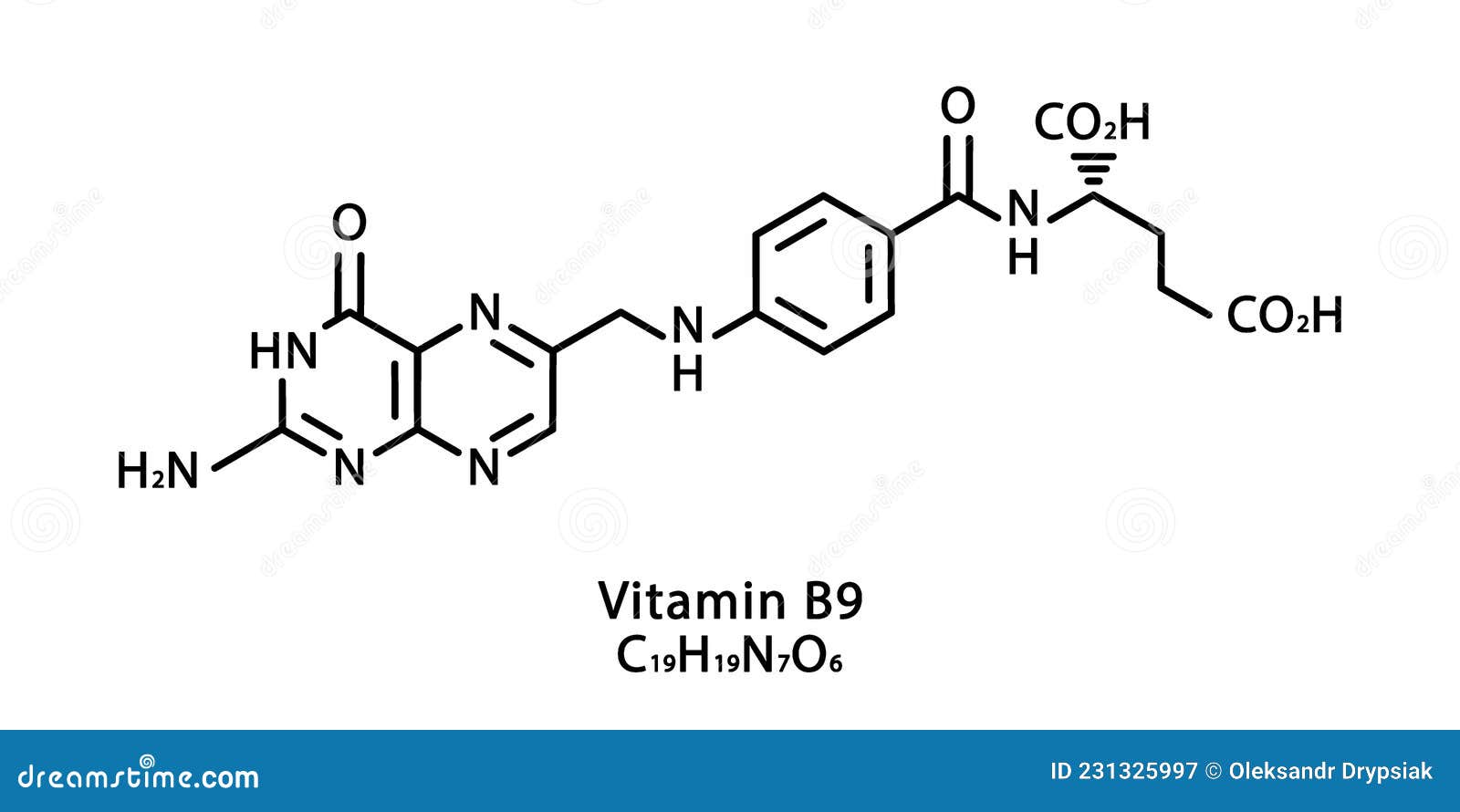
Vitamin B10 Molecular Structure, 3d Model Molecule, 4aminobenzoic Acid, Structural Chemical
Simple Structure Advanced History Comment on this record 3D Vitamin A Molecular Formula CHO Average mass 286.452 Da Monoisotopic mass 286.229675 Da ChemSpider ID 393012 - Double-bond stereo More details: Featured data source Names Properties Searches Spectra Vendors Articles More Names and Synonyms Database ID (s)

Chemical Formula of Vitamin a Stock Image Image of atom, board 36738325
compound Summary Retinol PubChem CID 445354 Structure Chemical Safety Laboratory Chemical Safety Summary (LCSS) Datasheet Molecular Formula C20H30O Synonyms retinol Vitamin A all-trans-Retinol 68-26-8 Vitamin A1 View More. Molecular Weight 286.5 g/mol Computed by PubChem 2.2 (PubChem release 2021.10.14) Dates Create: 2004-09-16 Modify: 2023-12-30

Vitamin B2 Chemical Formula. Vitamin B2 Chemical Molecular Structure. Vector Illustration Stock
When the body requires vitamin A, it is released from the liver, transported in the blood by the retinol binding protein, and subsequently delivered to other tissues. Animal Sources: Animal-derived foods are rich in preformed vitamin A. Prime sources include liver, kidney, egg yolk, milk, cheese, and butter.

As Vitaminas e suas Funções Dicas de Saúde
"Vitamin A" is the generic term for a group of fat-soluble compounds found in both animal and plant foods. Functions in your body Vitamin A is essential for your health. It supports cell.
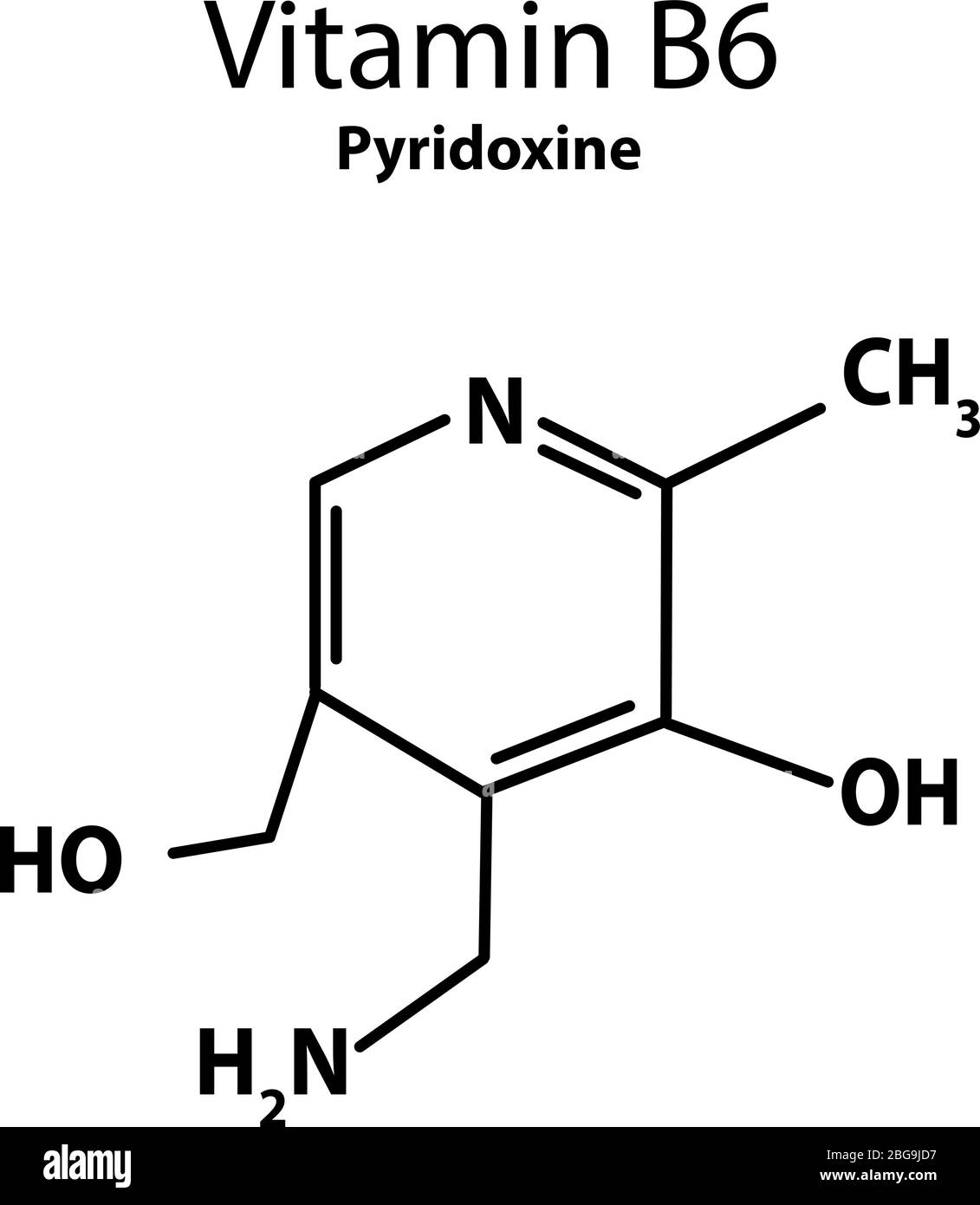
Vitamin B6. Pyridoxine Molecular chemical formula. Infographics. Vector illustration on isolated
applications), vitamin A palmitate 4 (for application in human nutrition), and retinol 1 itself (applications in personal care, mainly in skin-care products). Retinal 5 and retinoic acid 6 are the oxidized forms of retinol and make up the family of the retinoids. 2023 marks 75 years of chemical production of vitamin A acetate.
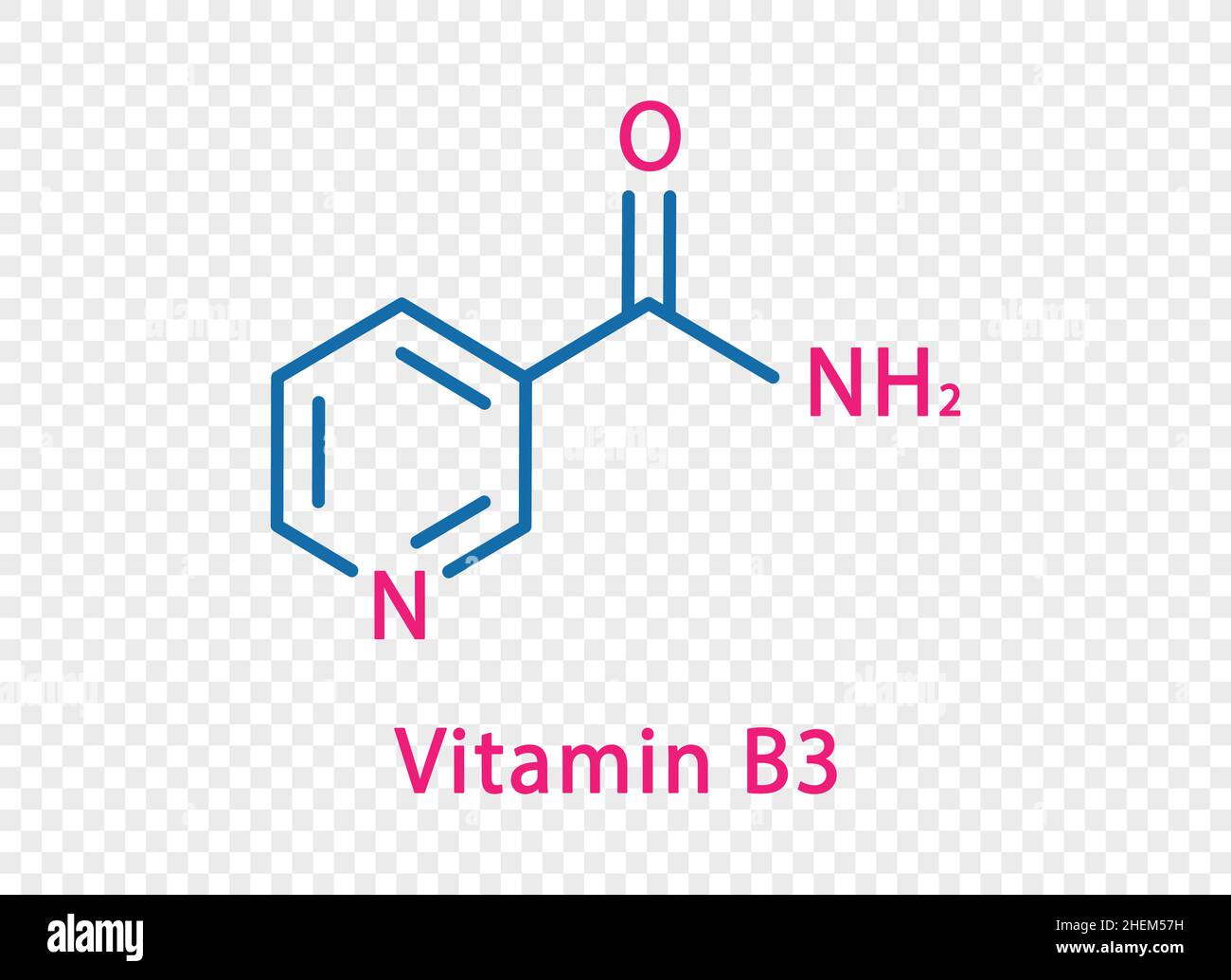
Vitamin B3 chemical formula. Vitamin B3 structural chemical formula isolated on transparent
Chemical names Chemical Properties Biochemical Functions 1. Visual cycle 2. Other Biochemical Functions Deficiency Disorders Overdose of Vitamin A What are the benefits of vitamin A? Frequently Asked Questions (FAQs) on Vitamin A Which foods are high in vitamin A? What does vitamin A do in the human body? How do we get vitamin A?
/vitamin-a-58b602a35f9b5860464ca3cf.png)
Vitamin Chemical Structures
An analysis of biochemical data from 2003-2006 NHANES data indicates that less than 1% of the U.S. population has a serum retinol level of less than 20 mcg/dL, which indicates that vitamin A deficiency is uncommon in the U.S. population [ ].
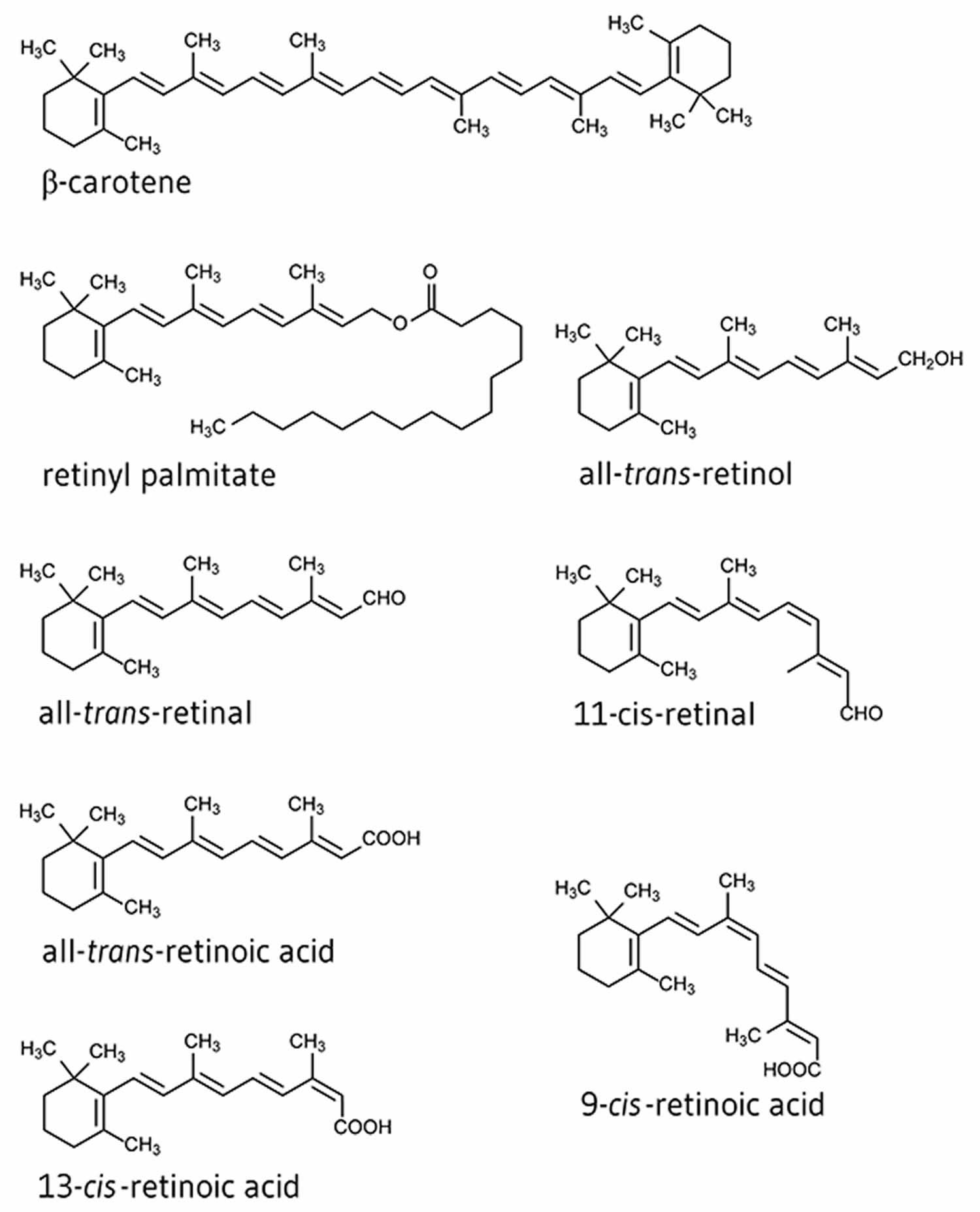
Hypervitaminosis A, causes, symptoms, diagnosis, treatment & prognosis
Vitamin A is a fat-soluble vitamin, a category that also includes vitamins D, E and K. The vitamin encompasses several chemically related naturally occurring compounds or metabolites, i.e., vitamers, that all contain a β-ionone ring. [3]
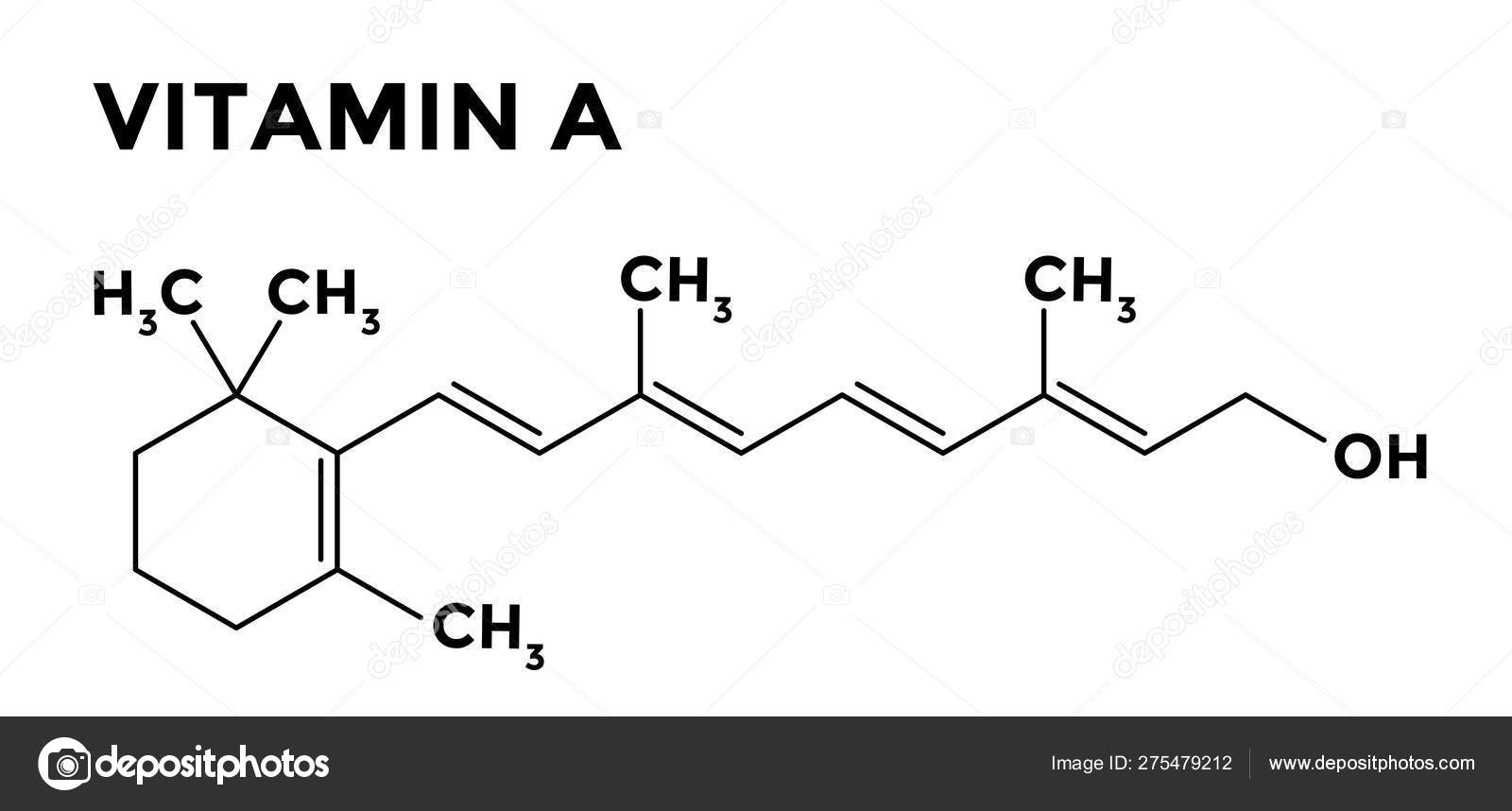
Vitamin A retinol structural chemical formula Stock Vector Image by ©eshana_blue 275479212
Vitamin A is a general term encompassing various fat-soluble substances such as retinol, retinyl palmitate, and beta-carotene. Its various metabolites are essential for vision, cellular differentiation, epithelial barrier function, and immune function. Vitamin A is obtained through the diet in two forms. Preformed vitamin A (retinol and retinyl.

Retinol High Resolution Stock Photography and Images Alamy
Retinyl acetate ( retinol acetate, vitamin A acetate) is a natural [dubious - discuss] form of vitamin A which is the acetate ester of retinol. It has potential antineoplastic and chemopreventive activities. [2] [3]

Vitamin A Stock Photo Image 53061524
Publisher Summary. This chapter discusses the chemistry and physiology of vitamin A. Chemical work on vitamin A depends on the establishment of biological activity. In the preparation of vitamin A concentrates by extraction from fish liver oils, the distribution of the vitamin can be adequately checked by determination of the ultraviolet.

Vitamin B6 Chemical Structure
The Daily Value used in nutrition labelling is based on 1000 RE of vitamin A for a reference diet (Note: RE equals retinol equivalents). For example, if a food product has 132 RE of vitamin A, the product would have a % Daily Value for vitamin A of 13%. (132 RE ÷ 1000 RE) × 100 = 13%.

Molecular structure of vitamin C Stock Image C040/4336 Science Photo Library
Vitamin A is found in two forms in our diet system- Preformed Vitamin A (found in animal products such as meat, fish, and poultry) and Provitamin A (found in plant-based foods such as fruits and vegetables). (1)(2)(3) Chemical and Physical Features. CAS number: 68-26-8 (2) Molecular Structure: (4) Molecular Formula: C20H30O (2) Weight: 286.45g.

Chemical Formula Of Vitamin B6 With Yellow Pills Stock Photo Download Image Now iStock
Vitamin A: β-Carotene is shared under a CC BY-NC-SA 4.0 license and was authored, remixed, and/or curated by LibreTexts. Nicotinamide Adenine Dinucleotide (NAD) β-carotene is the molecule that gives carrots, sweet potatoes, squash, and other yellow or orange vegetables their orange color. It is part of a family of chemicals called the.